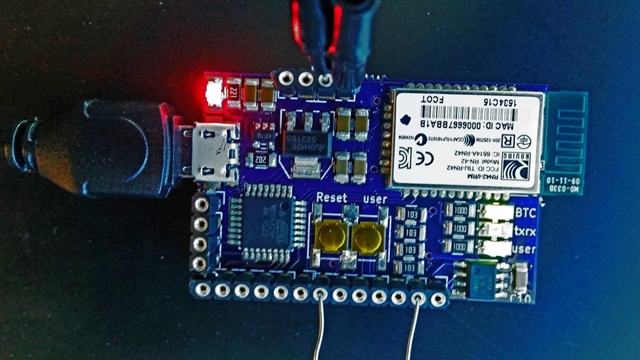
Prototype Zika virus sensor being adapted for Covid-19 diagnostics (Massood Tabib-Azar, Univ. of Utah)
8 May 2020. A university engineering lab is creating a small reusable device connected to a smartphone that detects SARS-CoV-2 viruses in a drop of saliva. The system is being developed by a University of Utah team in Salt Lake City led by electrical engineering professor Massood Tabib-Azar, and funded by a $200,000 grant from National Science Foundation.
Tabib-Azar’s lab studies micro- and nanoscale electronic circuits, including devices for biomedical applications. The proposed system aims to fill an urgent need for simple, inexpensive, and easy-to-deploy diagnostic testing for SARS-CoV-2 viruses responsible for Covid-19 infections in the U.S. and elsewhere. Those tests are needed to find individuals with virus and assess the state of public health.
But most current techniques for Covid-19 diagnostics require extracting RNA from the specimen and conducting a reverse transcription – polymerase chain reaction, or RT-PCR, test to amplify DNA in specimens for detecting SARS-CoV-2. RT-PCR tests use a specialized, sophisticated, and expensive genetics technology, usually in a remote lab. Current tests are also hampered by a shortage of chemical reagents to extract RNA from specimen samples and even swabs to collect samples.
The Utah team aims to build on its recent work on sensors for detecting Zika viruses, also funded by NSF, and developed as a platform technology adaptable to other viral diseases. That device and the proposed Covid-19 sensor use aptamers, single strands of nucleic acids like DNA or RNA that bind to proteins. Tabib-Azar and colleagues plan to use inactivated SARS-CoV-2 viruses obtained from Zeptometrix Corp. in Buffalo, New York to produce synthetic aptamers made with DNA strands. In an inactive state, say the researchers, the viruses do not need special bio-safety lab handling.
“It can be made to be a standalone device,” says Tabib-Azar in a university statement released through EurekAlert, “but it can also be connected to a cellphone. Once you have it connected either wirelessly or directly, you can use the cellphone software and processor to give a warning if you have the virus.”
The lab’s Zika sensor prototype measures 2.5 by 1.8 centimeters. The researchers say their Covid-19 sensor will be about the size of a U.S. quarter coin, with a diameter of 2.4 centimeters or one inch.
In the Covid-19 sensor, a buffer solution with fluorescing microbeads is placed over a layer of aptamers with an affinity for SARS-CoV-2 viruses. When a saliva sample has SARS-CoV-2 viruses, the aptamers are pulled into the buffer solution, causing the microbeads to react, giving off a red color signal. Results would be returned in about one minute. An electrical current from the connected smartphone heats the sensor, disintegrating the virus, allowing the sensor to be reused. In addition to saliva, the system could test surfaces for SARS-CoV-2 viruses from samples collected with swabs.
National Science Foundation awarded the funds under its Rapid Response Research program that provides up to $200,000 for projects of up to one year, although Tabib-Azar expects to have a working handheld sensor ready in two months. Science & Enterprise reported last month on another Covid-19 diagnostic and antibody test funded under this program at Duke University.
More from Science & Enterprise:
- Fast Paper Strip Covid-19 Test Devised with Crispr
- NIH Opens Covid-19 Diagnostic Test Challenge
- FDA Clears Home Covid-19 Diagnostic Test
- Fast, Simple Covid-19 Antibody Test Being Developed
- Covid-19 Saliva Sample Collection Cleared by FDA
* * *

 RSS - Posts
RSS - Posts
[…] Phone-Linked Diagnostic Sensor Designed for Covid-19 […]